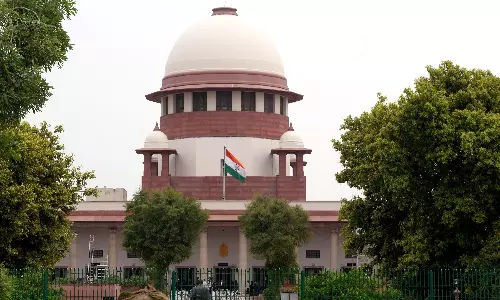7 per cent GDP? Wait to see if it was fact or fiction
The success of the digital mode is evident in the soaring revenues of one payment firm and many others who were suddenly in demand.;

Masking appears to be the favourite term of pessimists who feel demonetisation had an adverse effect on growth and are sceptical of GDP figures claiming a surprising seven per cent growth rate for October-December. These analysts/economists had predicted 6-6.5 per cent growth. It is possible the December quarter is riding high on the October-November festive season sales, or even that third quarter GDP figures were revised downwards too drastically. The government, however, is thrilled that the pessimists were proved wrong, with finance minister Arun Jaitley hitting out at those who predicted dire consequences after demonetisation. The ground reality is that those with high cash transactions faced a problem that could have been partly offset by a rise in digital transactions and various incentives by the government to encourage use of digital payment methods. The opening of bank accounts, particularly in rural areas through the Jan Dhan Yojana last year, helped to some extent to cushion the blow. The success of the digital mode is evident in the soaring revenues of one payment firm and many others who were suddenly in demand.
The reality, however, is that labourers in rural and urban areas who are paid cash daily faced huge problems as employers had no cash to settle their dues. Labourers in rural areas, specially in textile and other hubs, mainly in South India, had to go back to their villages as their employers didn’t have cash to pay them. It’s not known how many have returned. Perhaps the GDP statistics didn’t take these factors into account.
What is intriguing is the silence of Congress leader Rahul Gandhi after Mr Jaitley lambasted the critics of demonetisation for painting a picture of factories closing down etc. One would have thought he would have harped on the “suit-boot sarkar” being uncaring of the distress to rural labourers after demonetisation. It’s true, agriculture didn’t suffer much as farmers had already started sowing before the November 8 withdrawal of '1,000 and '500 notes that saw the sucking out of nearly 80 per cent of the currency in circulation. But there are also stories of growers selling vegetables and produce at throwaway prices as traders didn’t have cash to pay them. It would be prudent for the government to give details of all sections of the economic spectrum to get a truer picture. We still don’t know how much currency has actually come back into the system, as both the Reserve Bank and the government have remained silent on this.
The GDP figures for the January-March quarter may be more revealing of the true impact of demonetisation as the effects of the cash crunch could probably see some overhang. This would then indicate if the third quarter GDP figure was fact or fiction.


